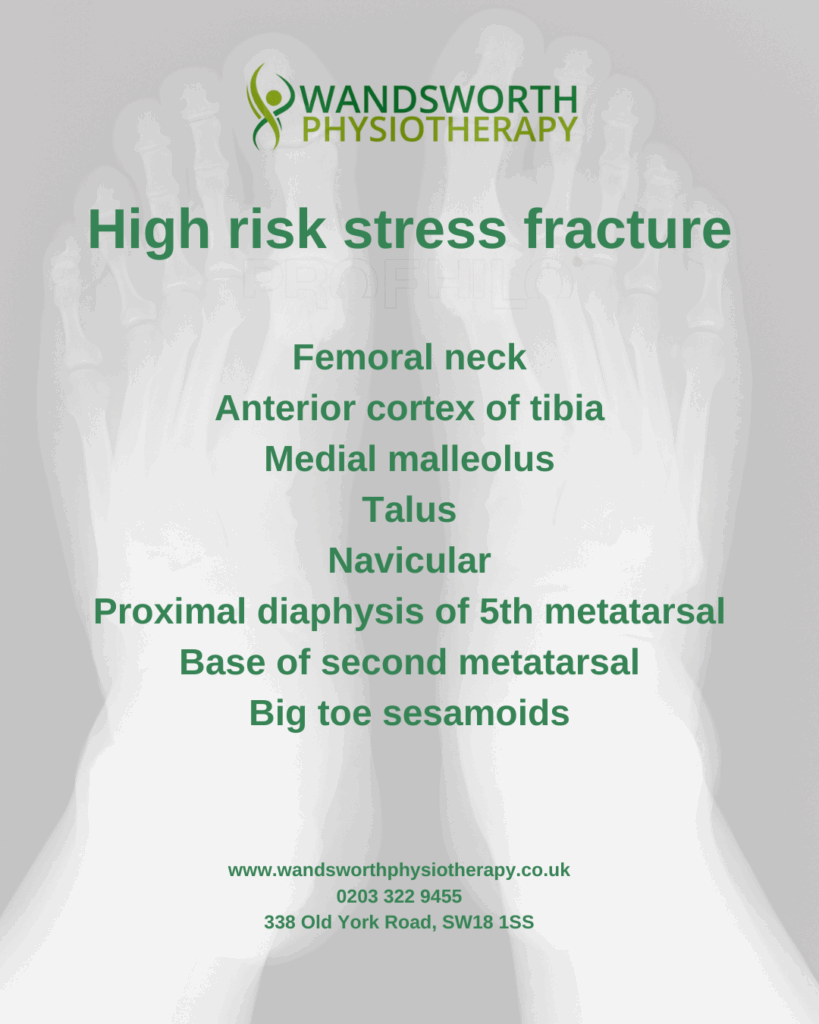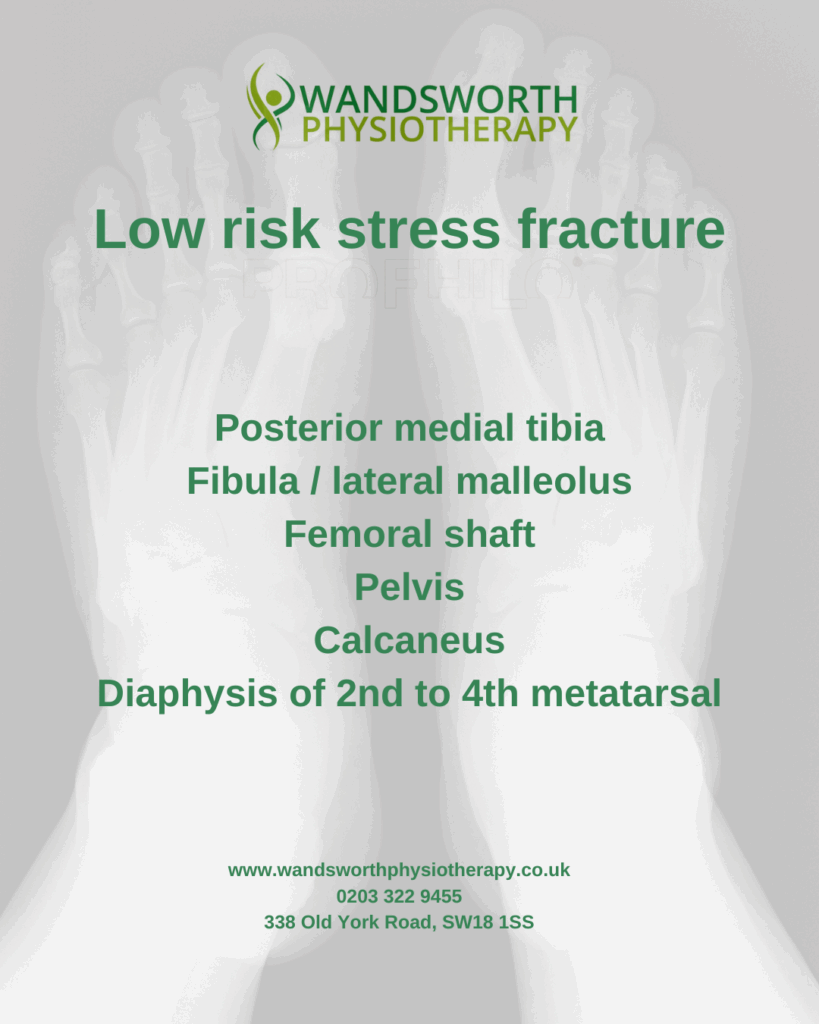At Wandsworth Physiotherapy, over the last 6–12 months, we’ve seen a noticeable increase in clients presenting with stress stress injury and stress fractures, particularly among young, slim, active females—though we’re seeing this in males too.
Stress fractures are common in runners and often occur due to a mix of training errors, inadequate nutrition, and insufficient recovery. It’s important to understand that there are high-risk and low-risk sites for these injuries. High-risk areas like the anterior tibia or neck of femur require special attention.
Resting bone stress injury until it feels better isn’t enough. Most people stop running and then return once the pain has settled. But without proper assessment and rehab, this may lead to recurrence. A structured return to running—especially following high-risk stress fractures—is critical. We recommend a repeat MRI around 2–3 months post-diagnosis to assess healing. X-rays are not usually sensitive enough to monitor stress fracture recovery effectively.

Here are the 5 key components for a safe return to running after bone stress injury:
1. Resolution of Bony Tenderness
There should be minimal tenderness over the affected area after a bone stress injury or stress fracture—at rest, with palpation, or during day-to-day activity. Any lingering pain suggests incomplete healing.
2. Pain-Free Walking and Activities of Daily Living
Before you return to running, you should be able to walk 30–45 minutes pain-free and complete your normal daily activities without symptoms. This should be sustained for at least five consecutive days.
3. Radiological Evidence of Healing
A follow-up MRI is crucial for high-risk sites. X-rays often miss healing indicators, especially early in the process. MRI provides clearer insight into bone recovery after bone stress injury or stress fracture and helps avoid premature return.
4. Passing Strength, Function & Loading Tests
We aim for a limb symmetry index of >85% before restarting impact loading. At Wandsworth Physio, we use force plates and dynamometry to assess strength, including run-specific isometric tests for the quads, hamstrings, and calves, as well as single-leg hop tests to ensure safe load capacity.
5. Addressing Individual Contributing Factors
Factors like Relative Energy Deficiency in Sport (RED-S) can play a major role. For many, especially females, this involves exploring menstrual health and ensuring adequate fuelling around exercise. We often refer clients for sports nutrition consultations to optimise recovery and prevent re-injury.

Once all five areas are ticked off, we guide you through a gradual return-to-run program, incorporating walk/run intervals and progressive loading to build back confidence and capacity.
If you’ve had a recent stress fracture—or suspect one—get in touch. Our expert team can guide you through diagnosis, rehab, and your return to pain-free running.
Contact us directly for more information.